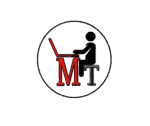-
Internet Programming Viva Questions 6
-
Web Programming fundamentalsLecture1.1
-
Java scriptLecture1.2
-
React fundamentalsLecture1.3
-
Advanced ReactLecture1.4
-
Node.jsLecture1.5
-
Express.jsLecture1.6
-
Web Programming fundamentals
1. How does a web browser work ?
Ans:A web browser takes you anywhere on the internet. It retrieves information from other parts of the web and displays it on your desktop or mobile device. The information is transferred using the Hypertext Transfer Protocol, which defines how text, images and video are transmitted on the web.
2. What is HTTP (Hypertext Transfer Protocol)?
Ans:The Hypertext Transfer Protocol is an application protocol for distributed, collaborative, hypermedia information systems that allows users to communicate data on the World Wide Web.
3.What is DNS?
Ans:The Domain Name System (DNS) is the phonebook of the Internet. Web browsers interact through Internet Protocol (IP) addresses. DNS translates domain names to IP addresses so browsers can load Internet resources.
4.What is XML?
Ans:Extensible Markup Language (XML) is a markup language that defines a set of rules for encoding documents in a format that is both human-readable and machine-readable.
5.What is JSON ?
Ans:
JSON stands for JavaScript Object Notation.
It is lightweight data-interchange format.
It is easy to read and write than XML.
It is language independent.
It supports array, object, string, number and values.
6. What's an API?
Ans:An API is a set of definitions and protocols for building and integrating application software. It’s sometimes referred to as a contract between an information provider and an information user—establishing the content required from the consumer (the call) and the content required by the producer (the response).
6. What's an REST API?
Ans:REST is a set of architectural constraints, not a protocol or a standard. API developers can implement REST in a variety of ways.
